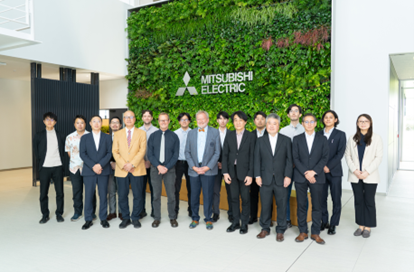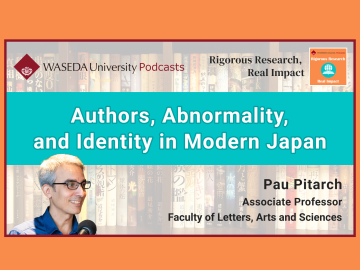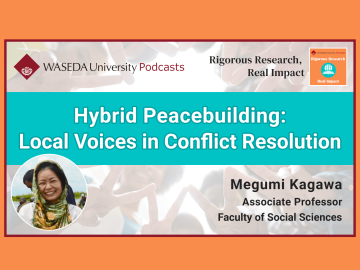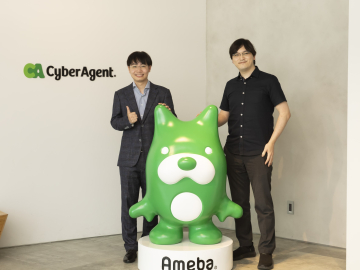Waseda Enters into Joint Research Agreement to Create a Comfortable Thermal Environment

Professors and researchers from Waseda University, the Technical University of Denmark, and the University of Sydney, along with members of the Mitsubishi Electric Information Technology R&D Center
Mitsubishi Electric Corporation (hereinafter referred to as “Mitsubishi Electric”), Waseda University, and the Technical University of Denmark have signed a joint research agreement with the University of Sydney to develop a thermal comfort index that can accurately predict an individual’s thermal sensation and to promote efforts toward its international standardization.
In recent years, factors such as the decline in the working-age population have created a demand for office environments that take into account the health, comfort, and productivity of workers. While there are many perspectives for evaluating office environments, thermal environment*1 is one of the factors that significantly impact workers. PMV*2, a representative evaluation index for thermal environments, can numerically express the thermal sensations felt by people, such as hot or cold. Since its establishment as an international standard (ISO 7730) in 1984, it has been used in architectural designs around the world. However, because this value is a statistical quantification of the sensations felt by many people, even when an office is designed to maximize the PMV value, there is a challenge: a certain percentage of people will experience discomfort due to hotness or coldness. To improve the well-being of everyone in office environments where diverse people gather, it is essential to establish a new index that accurately predicts individual thermal sensations, rather than a uniform evaluation index like PMV, and to create a thermal environment that takes diversity into consideration.
Mitsubishi Electric and Waseda University signed a “Basic Agreement on Comprehensive Collaboration Toward the Realization of a Sustainable Society” in November 2023 *3 and have been conducting research on topics such as carbon neutrality and well-being. As part of this, they have also been working on research on “improving the thermal environment.” Aiming to further strengthen and accelerate this research, the four parties have now joined forces to launch a joint research project, adding the Technical University of Denmark and the University of Sydney, which have world-class expertise in architectural environmental studies, particularly in the field of thermal environment. By comprehensively capturing all factors, including personal attributes, in addition to the indoor environmental elements that have traditionally been considered in evaluating the thermal environment, the four parties aim to develop a new evaluation index that can accurately predict individual thermal comfort and to internationally standardize this index.
*The principal researcher at Waseda University is Professor Shinichi Tanabe of the Faculty of Science and Engineering
Main roles of the four parties
| Organization | Role |
| Mitsubishi Electric Corporation | ・Drafting a demonstration plan and provision of demonstration environments such as the ZEB-related technology demonstration building “SUSTIE®” *8 ・Development of control systems for thermal environment control and collection of various empirical data |
| Waseda University (Professor Shinichi Tanabe and others) |
・Drafting a demonstration plan and designing a subject questionnaire ・Analysis of empirical data and development of evaluation indices based on comfort studies using the human body temperature regulation model JOS-3*4, thermal manikin*5 |
| Technical University of Denmark (Professor Emeritus Bjarne W. Olesen and others) |
・Drafting demonstration plans and providing the demonstration environment ・Analysis of empirical data and construction of indicators based on research results on personal environmental control systems and personal comfort |
| University of Sydney (Professor Emeritus Richard de Dear and others) |
・Drafting demonstration plans and providing the demonstration environment ・Analysis of empirical data and construction of indicators backed by research results regarding Adaptive model*6 and Thermal Alliesthesia*7 |
Future plans and outlook
Toward the establishment of evaluation indices and their international standardization, we will conduct various research into thermal comfort, including large-scale subject experiments and experiments using thermal manikins, and will publish the results at academic conferences and in international journals. We will propose new thermal environments for future offices and promote their implementation in society.
Glossary
※1 The environment that affects a person’s thermal sensation, and is composed of multiple factors such as temperature, radiant temperature, humidity, airflow, amount of clothing worn, and metabolic rate.
※2 Predicted Mean Vote: An index used to evaluate comfort in a thermal environment, calculated from environmental factors (air temperature, mean radiant temperature, relative humidity, airflow) and human factors (amount of clothing, metabolic rate).
※3 Press release dated November 8, 2023: Waseda University concludes basic agreement with Mitsubishi Electric
※4 Human thermoregulation model developed by Shin-ichi Tanabe Laboratory the at Waseda University. A numerical model for simulating the human body’s thermal physiological responses, such as skin temperature, core body temperature, and sweating rate, for the whole body and 17 localized areas.
※5 A heating element with the shape of a human body created for measuring the thermal resistance of clothing, a dummy used to reproduce the thermal characteristics of clothing when worn by a human.
※6 Adaptive model: An index of thermal comfort that takes into account people’s adaptation to the outdoor environment.
※7 Thermal Alliesthesia: A concept that indicates that a given thermal environment stimulates a sensation of pleasure or discomfort.
※8 ”SUSTIE” is a registered trademark of Mitsubishi Electric Corporation








